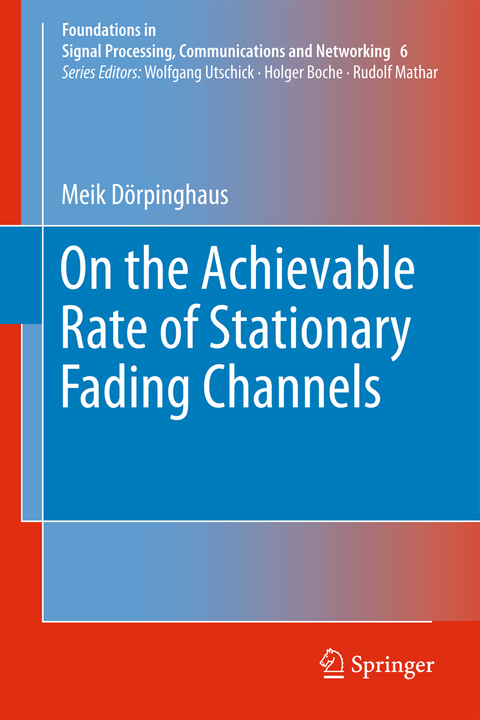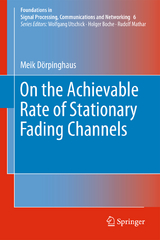On the Achievable Rate of Stationary Fading Channels
Seiten
2011
|
2011
Springer Berlin (Verlag)
978-3-642-19779-6 (ISBN)
Springer Berlin (Verlag)
978-3-642-19779-6 (ISBN)
This volumes discusses various aspects regarding the capacity/achievable data rate of stationary Rayleigh fading channels. First, it analyses bounds on the achievable data rate with zero-mean proper Gaussian input symbols, which are capacity achieving in the coherent case, i.e., in case of perfect channel knowledge at the receiver. These bounds are tight in the sense that the difference between the upper and the lower bound is bounded for all SNRs. The lower bound converges to the coherent capacity for asymptotically small channel dynamics. Furthermore, these bounds are extended to the case of multiple-input multiple-output (MIMO) channels and to the case of frequency selective channels. In a further part, the present work studies the achievable rate with receivers based on synchronized detection and a code-aided channel estimation. For a specific type of such a receiver an approximate upper bound on the achievable rate is derived. The comparison of this approximate upper bound and the achievable data rate with receivers using synchronized detection based on a solely pilot based channel estimation gives an approximate upper bound on the possible gain by using this kind of code-aided channel estimation in comparison to the conventional receiver using a solely pilot based channel estimation. In addition, the achievable data rate with an optimal joint processing of pilot and data symbols is studied and a lower bound on the achievable rate for this case is derived. In this context, it is also shown which part of the mutual information of the transmitter and the receiver is discarded when using the conventional receiver with synchronized detection based on a solely pilot based channel estimation.
Introduction.- Discrete-Time Flat-Fading System Model.- Bounds on the Achievable Rate of a Flat-Fading Channel.- Bounds on the Achievable Rate of a Flat-Fading Channel Based on Prediction.- Pilot Based Synchronized Detection.- Iterative Code-Aided Synchronized Detection.- Joint Processing of Pilot and Data Symbols.- MIMO Flat-Fading Channels.- Frequency-Selective Channels.- Optimum Discrete Signaling.- Conclusion.- Mathematical Derivations and Proofs.
| Erscheint lt. Verlag | 14.8.2011 |
|---|---|
| Reihe/Serie | Foundations in Signal Processing, Communications and Networking |
| Zusatzinfo | XIV, 310 p. |
| Verlagsort | Berlin |
| Sprache | englisch |
| Maße | 155 x 235 mm |
| Gewicht | 615 g |
| Themenwelt | Technik ► Elektrotechnik / Energietechnik |
| Technik ► Nachrichtentechnik | |
| Schlagworte | Channel Estimation • discrete signaling • frequency-selective channels • Kullback-Leibler distance • MIMO channels • Mobile Communications • Mobilkommunikation • Rayleigh flat-fading • stochastic channel fading • synchronized detection • wireless networks |
| ISBN-10 | 3-642-19779-5 / 3642197795 |
| ISBN-13 | 978-3-642-19779-6 / 9783642197796 |
| Zustand | Neuware |
| Haben Sie eine Frage zum Produkt? |
Mehr entdecken
aus dem Bereich
aus dem Bereich
DIN-Normen und Technische Regeln für die Elektroinstallation
Buch | Softcover (2023)
Beuth (Verlag)
86,00 €
Kolbenmaschinen - Strömungsmaschinen - Kraftwerke
Buch | Hardcover (2023)
Hanser (Verlag)
49,99 €




